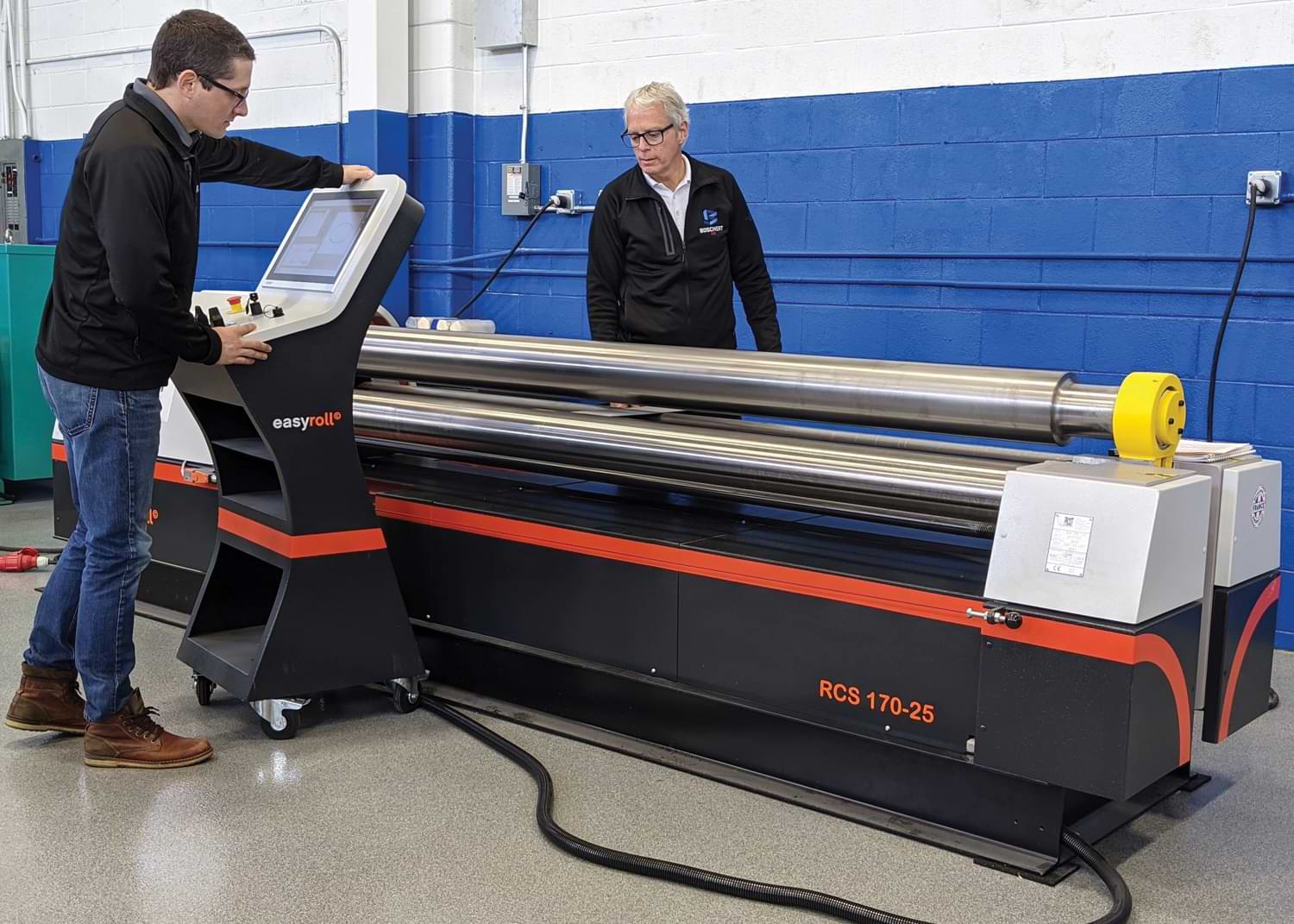
to take on the competition
hen newcomer Muhammad Ali [Cassius Clay] took on world heavyweight champion Sonny Liston in 1964, he told fans he would “float like a butterfly and sting like a bee.” He danced, shuffled and jabbed his way to a seventh-round knockout to claim the title. The iconic phrase was Ali’s self-described fighting style in the ring, but it is also an apt description of Boschert USA’s plate roll bending machines produced by French equipment builder AMB Picot.
The North American distributor’s Picot 3-roll machines can finesse aluminum composite material (ACM) into architectural shapes, tackle welterweight materials,or take on heavy plate up to 1 in. thick with equal dexterity. Single-minded pursuit of target markets, service and commitment to defining, sourcing, building and delivering the right machine to fit a customer’s needs has kept the agile business in the family for four generations.
“My father-in-law’s father, Leo Richards, started L. L. Richards Machinery Co. in 1937,” says Boschert USA Owner and President Greg Hoesly. “The company eventually became a local dealer for Boschert Precision Machinery Co. Inc.
“In 1984, I started working for my father-in-law and purchased Boschert in 2002,” he continues. “Initially, our plan was to run Boschert as part of L. L. Richards, but the market was dwindling for used machinery. We made the decision to sell L. L. Richards and focused our efforts on Boschert’s notchers and its manual and CNC punching machines.”

Picot’s 3-roll design processes aluminum composite material without damaging the material’s fragile surfaces. Rolls can also be fitted with polyamide covers to allow rolling of ACM with pre-bent flanges.
![Processed Sheet Metal Picot 3-roll machines can process thin sheet, thick plate, pre-painted, ACM and 3D parts [plates with flanges].](https://digital.ffjournal.net/wp-content/uploads/2021/03/ffj-april-2021-contender-picots2.jpg)
The technology has allowed Boschert to capture work from a diverse customer base. It has also helped the distributor make inroads into emerging markets. Unlike conventional roll bending machines, the versatile Picot three-roll’s polyamide rolls can process ACM without damaging the material’s fragile surface. “A 4-roll machine works by squeezing or compressing the material,” says Hoesly. “If you do that to aluminum-clad material, you’ll wreck it. The use of die bond aluminum in architectural applications is growing because it’s aesthetically pleasing, corrosion resistant and acts as a fire retardant. It has been a good space for us. The material is expensive, so manufacturers don’t want to see it scrapped. We’re a small company that has built its reputation serving niche markets.”
“The control borders on artificial intelligence,” says Hoesly. “It builds a database using the parameters from each job the roll bender runs.” In addition to standard capabilities such as calculating roll requirements for a job, the control’s information collection activities allow it to sense environmental conditions such as whether material is warm or cool or how old it is. The control then draws on that knowledge pool to advise operators about where to start on new jobs.
 We’re a small company that has built its reputation serving niche markets.
We’re a small company that has built its reputation serving niche markets. 
Boschert USA
Hoesly has plans to continue growing the business but he also has what he calls a rather lofty goal. “We understand that customers closely guard techniques they have developed internally,” he says. “If that information could be shared generically, we could grow our database and ultimately offer it as a think tank of sorts that companies across the country could access. The industry is only going to get more digitized. We want to make sure fabricators have the tools they need.”

